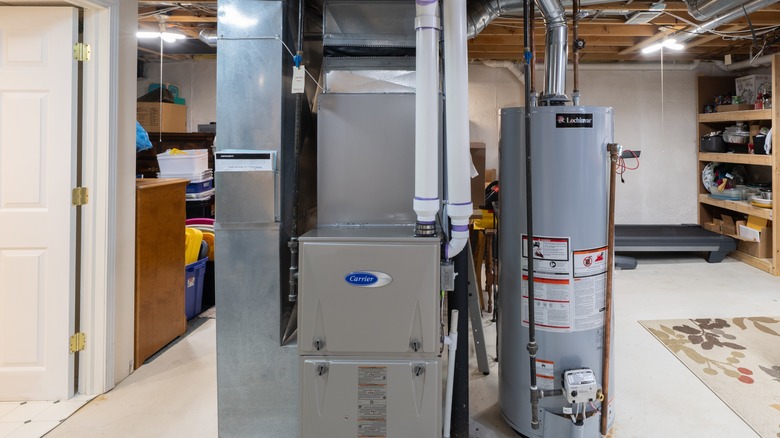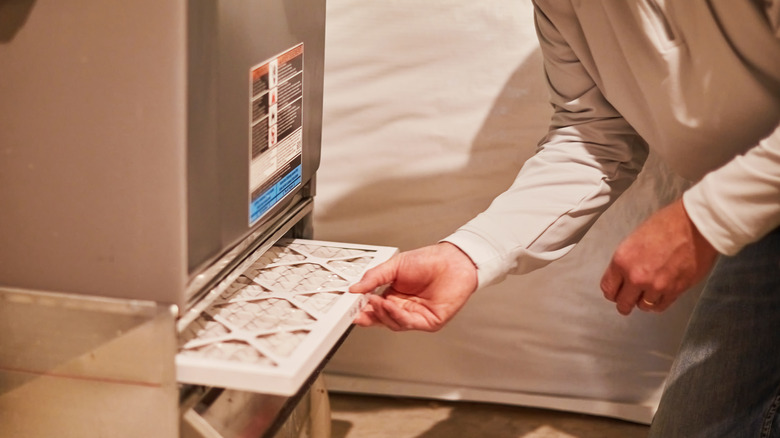How Your Furnace Placement Can Affect Your Appliance's Lifespan
You probably don't spend much time thinking about your furnace, aside from replacing the filter or scheduling an annual tune-up. One factor plays a significant role in the lifespan of your heating system even more than regular maintenance — its location. If you're moving into a new house or planning to install a new furnace, checking the placement of the unit is important. Furnaces that are in inappropriate areas, like an attic, a crawl space, or an uninsulated garage, are exposed to extreme swings in temperature and humidity. These changes can put a great deal of stress on the furnace's mechanical parts, causing them to wear down too soon and shortening the equipment's lifespan.
How long should your furnace last? Well, if you'd like your heating unit to last its estimated life of 15 to 20 years, you should make sure it's in a climate-controlled space. Utility closets, insulated garages, or basements typically provide the best environment for a furnace. When it's protected from drastic temperature changes, it doesn't have to cycle as frequently or work as hard, which saves wear and tear on the internal parts of the furnace. Choosing the right spot is an important step that can protect your furnace and save you from a costly furnace replacement.
How do temperature and moisture fluctuations shorten the life of a furnace?
Putting a heating system in a non-conditioned area like an attic or crawl space exposes it to extreme temperature fluctuations, which makes the furnace work harder to keep up with demand. In the summer, an attic can be very hot, while in the winter, it's freezing. Even when prepping your furnace for the chilly winter season, these extremes can shorten the lifespan of the motor and other mechanical parts. This is especially problematic for high-efficiency furnaces, since abrupt temperature changes make the internal parts expand and contract repeatedly, resulting in thermal stress and potential mechanical failure.
Moisture is another problem when a furnace is installed in an inappropriate area. High humidity leads to rust and corrosion, which damages metal parts, including heat exchangers and burners. Alternatively, excessively dry conditions in a cold attic can cause materials in the heating system to dry out and crack. Condensation, or sweating, frequently forms on ductwork running through uninsulated crawl spaces. If the ductwork or the unit's secondary drain pan can't handle excess moisture, the water can cause mold and mildew growth, resulting in rotting around the building materials. Areas like crawl spaces and attics are also easy locations for rodents to enter the house. They can chew on the electrical wiring and build nests that could interfere with the furnace's operation.
The most common places to install a furnace to make sure it runs efficiently
The preferred spot for a furnace is a location that has a regulated temperature and easy access for maintenance. Basements are usually an ideal choice because they can protect a furnace from outdoor temperature extremes. Utility rooms and insulated garages are also excellent options for similar reasons. The key to longevity is making sure the furnace has enough space around it, which is something a homeowner needs to confirm before installation. Getting your furnace inspected at the right time of the year is important, but this type of maintenance cannot happen if the unit is inaccessible. When a furnace is installed in a tight crawl space or a small closet, service technicians may not be able to perform routine maintenance because the unit is too difficult to reach. This allows dirt and debris to build up and causes the parts to wear out prematurely.
Placement also affects safety, especially for gas furnaces. These units need a sufficient supply of fresh air to properly complete the combustion process. An experienced professional installation tech will measure the space to make sure it has the required airflow to prevent issues like the buildup of carbon monoxide or backdrafting. A furnace should be installed where it can run efficiently, be easily maintained, and be protected from temperature shifts that can put stress on the unit.


